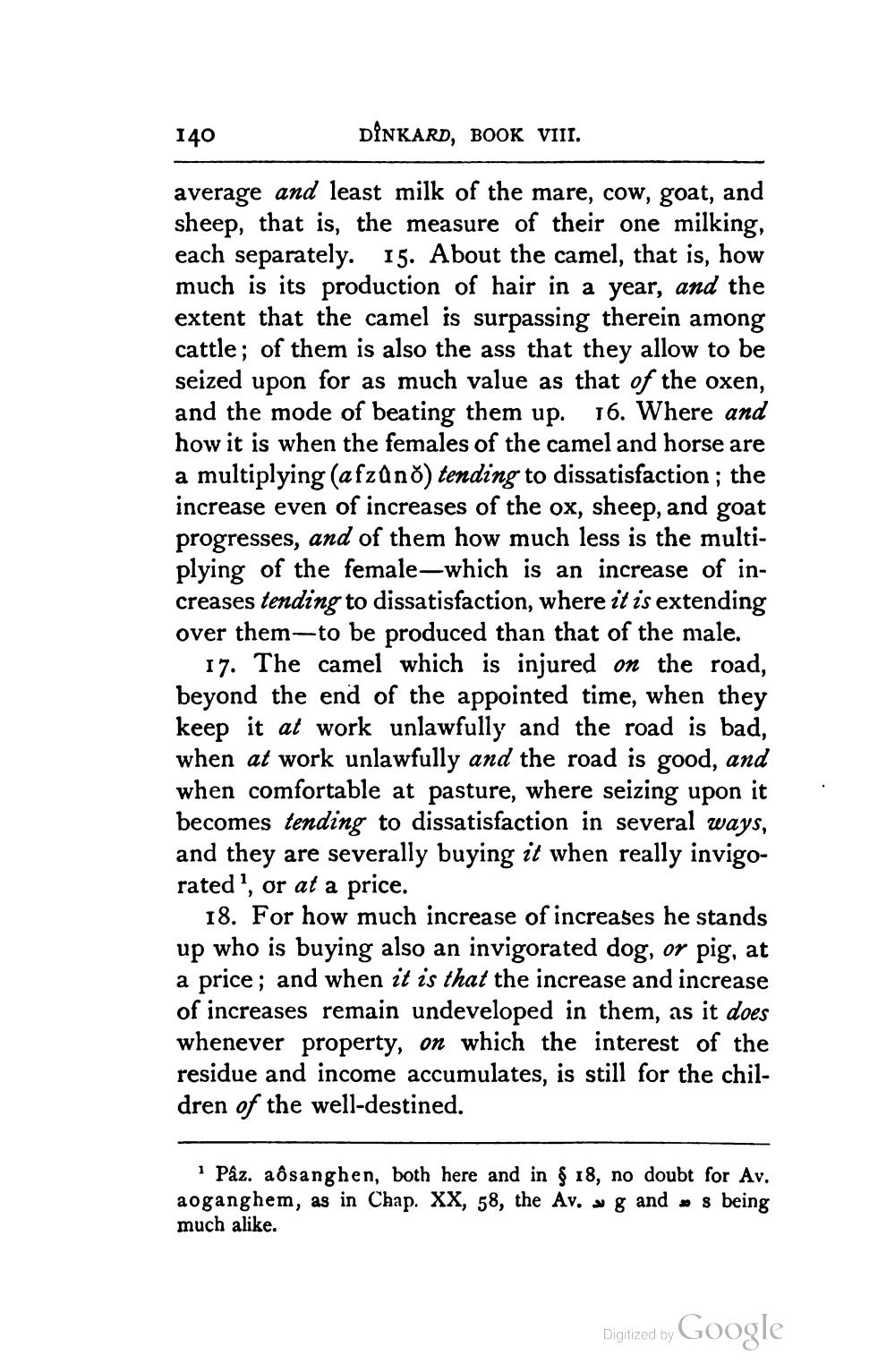________________
140
DÎNKARD, BOOK VIII.
average and least milk of the mare, cow, goat, and sheep, that is, the measure of their one milking, each separately. 15. About the camel, that is, how much is its production of hair in a year, and the extent that the camel is surpassing therein among cattle; of them is also the ass that they allow to be seized upon for as much value as that of the oxen, and the mode of beating them up. 16. Where and how it is when the females of the camel and horse are a multiplying (afzūno) tending to dissatisfaction ; the increase even of increases of the ox, sheep, and goat progresses, and of them how much less is the multiplying of the female—which is an increase of increases tending to dissatisfaction, where it is extending over them-to be produced than that of the male.
17. The camel which is injured on the road, beyond the end of the appointed time, when they keep it at work unlawfully and the road is bad, when at work unlawfully and the road is good, and when comfortable at pasture, where seizing upon it becomes tending to dissatisfaction in several ways, and they are severally buying it when really invigorated', or at a price.
18. For how much increase of increases he stands up who is buying also an invigorated dog, or pig, at a price; and when it is that the increase and increase of increases remain undeveloped in them, as it does whenever property, on which the interest of the residue and income accumulates, is still for the children of the well-destined.
Paz. aôsanghen, both here and in § 18, no doubt for Av. aoganghem, as in Chap. XX, 58, the Av. wg and , s being much alike.
Digitized by Google




